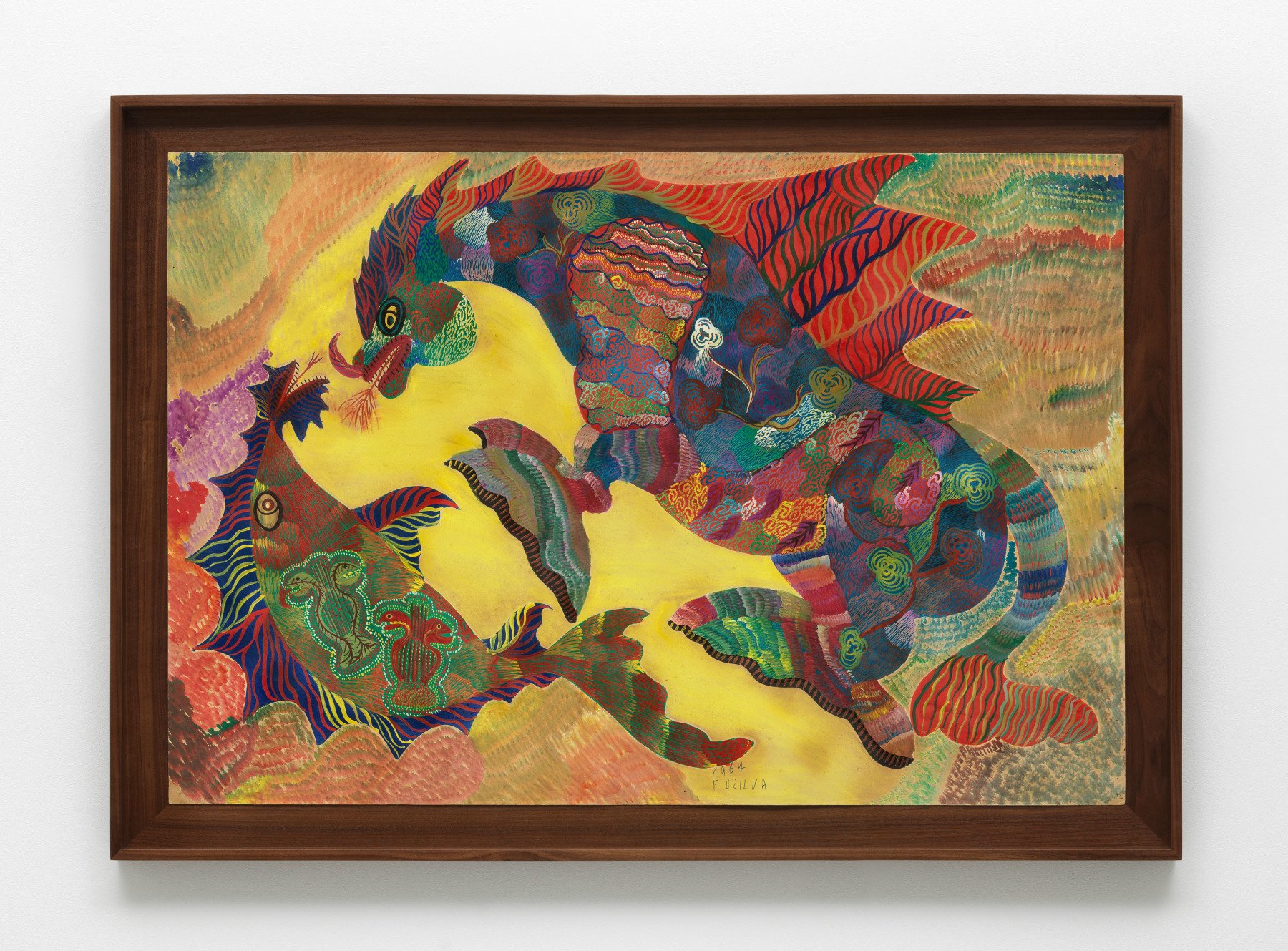CHICO DA SILVA: AMAZÔNICO
David Kordansky Gallery is pleased to announce Amazônico, the first solo exhibition of Chico da Silva’s work in Los Angeles.
March 13 – April 26, 2025
Over a prolific career spanning four decades, Chico da Silva devoted himself to depicting the celestial, otherworldly realms within his imagination. His work, which spans a rich and varied body of paintings, drawings, and performance, encapsulates a profound engagement with the intersection of personal mythology, cultural history, and collective creativity. Amazônico brings together exemplary paintings from the 1980s—an often-overlooked phase of Chico’s career—alongside works from the 1960s, offering a comprehensive look at his practice and insight into the evolution of his distinctive artistic vision.
Born in Alto Tejo, Brazil, Chico’s early years in the Amazon deeply influenced the development of his cosmology of fantastical creatures and environments. As a teenager, he moved to Pirambu with his mother. It was only a few years later that Swiss art critic Jean-Pierre Chabloz saw him drawing on some neighborhood buildings and quickly became a key supporter, launching Chico’s international career. By the early-to-mid 1960s, Chico had honed his unique style, working primarily on paper and depicting creatures—both real and imagined—in suspended states of conflict. The 1964 and 1966 works featured in this exhibition both feature stippled lines and dots that define his bichos (creatures). In the 1966 example, fish surrounding a tree share the same intricate patterns, dissolving the boundary between flora and fauna in Chico’s invented world.
Chico continued to garner significant attention, culminating with an invitation to participate in the 1966 Venice Biennale, where he received an honorable mention. A work from this pivotal year is included in Amazônico. The only painting in the original artist frame, this work offers critical insight into Chico’s process: the painting’s frame bears marks from the artist, who constantly wiped his brush onto the frame’s border to ensure precision in every stroke. His refined technique later became the foundation for the Pirambu School. Originally conceived as an arts workshop for children and local artisans to learn directly from Chico, the school quickly evolved into a collective. Members of the Pirambu School began to create their own works, expanding Chico’s visual language and contributing to a shared, imaginative universe.
Chico’s deployment of Amazonian flora, fauna, and mythical iconography has had a lasting impact on international audiences. By presenting regional narratives on an international stage, Chico continues to play a key role in shaping the conversation around Latin American art, challenging conventional views and highlighting the relevance of art practices from outside traditional art centers in global movements.


